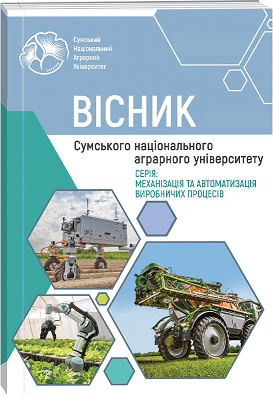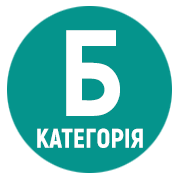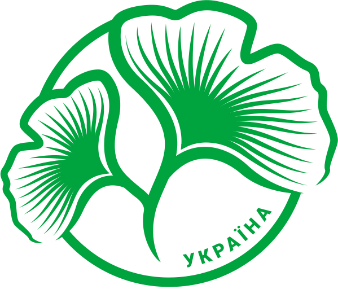TARGET-SPECIFIC CHOICE OF TECHNOLOGY AND SETTING THE CRITERIA FOR EVALUATING THE MOST RATIONAL METHOD FOR STRENGTHENING METAL-CUTTING TOOLS
Abstract
The paper outlines the findings of the analysis of the literary sources and production experience on the choice of materials for metal-cutting tools (MCT) and the basic requirements for their manufacture and operation. Considering that less than all materials can be used for MCT surfaces, their choice is of crucial importance. There are no comprehensive studies in the literature aimed at developing a technology for choosing the materials required for the MCT and their elements, the use of which would ensure the MCT maximum service life. None of the recommendations relative the choice of the MCT materials, which are available in the literature, is universal. The purpose of this paper is to develop a system and criteria for performing the target-specific choice of a technology, which, on analyzing and synthesizing the existing analogs, industry experience and recommendations described in the national and foreign literatures, ensures the required quality of the MCT working surfaces. A system for the target-specific choice of technology for ensuring the required quality of the MCT working surfaces at different stages of their life cycle has been proposed. The conducted studies enabled the authors to develop the general provisions on improving the quality of the MCT working surfaces depending on the requirements of operation. With the use of the proposed method for solving the problem of the target-specific choice of the technology for improving the quality of the MCT working surfaces, it is possible to solve both the direct straight and the inverse technical problems. Those are: to determine the wear expressed by the real surface roughness, based on the known friction work, and vice versa, based on the known wear expressed by the existing surface roughness, to predict the friction work required for this, that is, the time required to fulfill this work. In turn, having known the period of time for reaching a certain value of the MCT wear, a specialist obtains an opportunity to operate the MCT rationally, as well as to schedule the time for resharpening and strengthening the MCT, preventing the build-up of the MCT catastrophic wear. With the use of the proposed mathematical model (1-6), it becomes possible to predict reliably the value of the wear for the MCT working surfaces formed by one or another method. In this case, the constants of the wear equation (the activation energy of the wear process (EA) and the maximum allowable wear, (ΔRamax) are the criteria for choosing the most rational technology for improving the MTC quality. Having known the amount of wear over a certain time, as well as the cost of implementing a particular technology, one can choose the necessary technology for improving the MTC quality.
References
2. Ding, F., He., Z. (2011) Cutting tool wear monitoring for reliability analysis using proportional hazards model, International Journal of Advanced Manufacturing Technology 57, pp. 565-574.
3. Ivanov, V., Dehtiarov, I., Denysenko, Y., Malovana, N., and Martynova, N. (2018). Experimental diagnostic research of fixture. Diagnostyka, 19(3), pp.3-9. https://doi.org/10.29354/diag/92293.
4. Ivanov, V., Dehtiarov, I., Pavlenko, I., Kosov, M., Hatala, M. (2020). Technological Assurance and Features of Fork-Type Parts Machining. In: Ivanov, V., et al. Advances in Design, Simulation and Manufacturing II. DSMIE 2019. Lecture Notes in Mechanical Engineering. Springer, Cham. https://doi.org/10.1007/978-3-030-22365-6_12
5. Klim, Z., Ennajimi, E., Balazinski, M., Fortin, C. (1996). Cutting tool reliability analysis for variable feed milling of 17-4PH stainless steel, Wear 195, pp. 206-213.
6. Korobov Yu.M., Preis H. A. (1976). Elektromekhanichnyi znos pry terti i rizanni metaliv [Electromechanical wear during friction and cutting of metals]. – Kyiv: Tekhnika. – 200 s. [in Ukrainian]
7. Kotliar, Y. Basova, V. Ivanov, O. Murzabulatova, S. Vasyltsova, M. Litvynenko, and O. Zinchenko (2020). Ensuring the economic efficiency of enterprises by multi-criteria selection of the optimal manufacturingprocess. Managementand Production Engineering Review, 11, No. 1: 52.
8. Pylypaka, S., Volina, T., Mukvich, M., Efremova, G., Kozlova, O. (2020). Gravitational Relief with Spiral Gutters, Formed by the Screw Movement of the Sinusoid. In: Ivanov, V., Pavlenko, I., Liaposhchenko, O., Machado, J., Edl, M. (eds) Advances in Design, Simulation and Manufacturing III. DSMIE 2020. Lecture Notes in Mechanical Engineering. Springer, Cham. https://doi.org/10.1007/978-3-030-50491-5_7.
9. Sakharov, G.N., Ilinykh, V., Konyukhov, Yu, V. (1990). Improvement of fastening elements in an assembled cutting tool, Soviet engineering research, 10/11, pp. 102-103.
10. Tarelnyk V.B., Konoplianchenko Ye. V., Martsynkovskyi V.S. ta in. (2011). Pidvyshchennia stiikosti rizalnoho instrumentu tekhnolohichnymy metodamy: navch. posibnyk [Increasing the durability of cutting tools using technological methods: a training manual] Pid redaktsiieiu profesora Tarelnyka V.B. – Sumy: Universytetska knyha. – 189 s.
11. Wang, K.-S., Lin, W.-S., Hsu, F.-S. (2001). A New Approach for Determining the Reliability of a Cutting Tool, International Journal of Advanced Manufacturing Technology 17, pp. 705-709.
12. Zatulenko A. S., Zaiets S.S. (2018). Vplyv protsesu znoshuvannia rizalnoho instrumentu na tochnist mekhanichnoi obrobky [The impact of the cutting tool wear process on machining accuracy]. – XI vseukrainska naukovo-praktychna konferentsiia studentiv ta aspirantiv «POHLIaD U MAIBUTNIe PRYLADOBUDUVANNIa», 15-16 travnia 2018 roku, KPI im. Ihoria Sikorskoho, m. Kyiv, Ukraina. [in Ukrainian].

 ISSN
ISSN  ISSN
ISSN 



